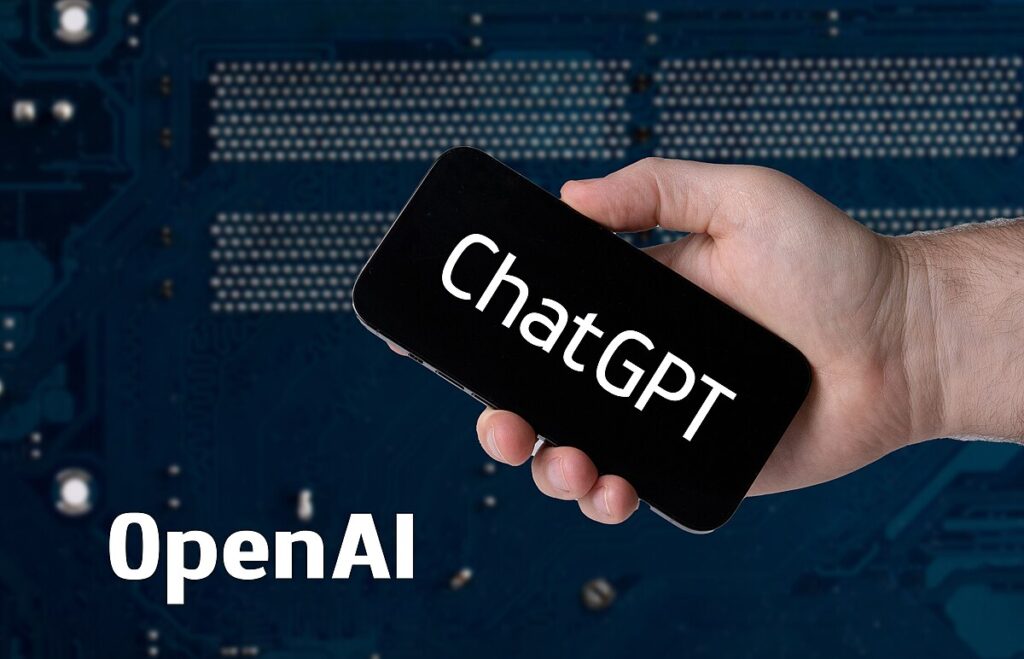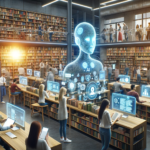
I’ve written about AI’s effects on libraries and librarians more broadly, and today I’ll share some thoughts about how AI is affecting library instruction and approaches to information literacy.
There there are a lot of credible fears about AI’s propensity to mislead, but I think there are also opportunities to refresh conversations about authority, search tools, and even the ways we engage with information sources in the first place.
Authority/Credibility and Sourcing: One of the key takeaways about Large Language Models like ChatGPT is that they are not designed to give you “truth” but rather to generate something plausible.
In academic contexts where facts and details matter, this is obviously problematic.
But I think this brings the concept of information literacy further into the mainstream and that experimenting with these tools could make more people stop and think about, say, where a certain fact or statement comes from, or whether a piece of information is current or outdated.
In a webinar I recently attended, the speaker argued that despite all the claims we’re living in a “post-truth” world, we actually care more about evidence now than ever before.
Of course, our ability to link actual evidence to an implied claim may be lacking, and our perception of what constitutes “good” evidence may be flawed, but we do care about these issues, and emerging AI tools may provide a new entry point into acknowledging our limitations and being open to sharpening those skills.
So in a world with AI, it may be harder to guide students through the maze of information and figure out what to trust, but perhaps that evaluation process itself is becoming more understood as necessary.
It also helps that conversations with AI are much more civil and positive than the other place we typically engage with evidence and conflicting viewpoints: toxic social media comment sections. Indeed, some research shows that AI can actually change people’s minds on hot-button political issues.
In practice, instructors can have students use AI to sharpen arguments and articulate plausible counterarguments for a given topic. For credibility, it could involve showing students examples of when ChatGPT succeeds (and fails) at identifying the provenance of ideas, and exploring when it cites real sources vs. when it hallucinates a plausible but nonexistent source.
And in the context of a research paper, you can ask students to add active links to all their in-text citations to ensure they’ve actually engaged with an original source that actually exists.
Refreshing the Conversation About Search Tools: Related to this is how AI is upending the conversation about the wide variety of search tools at our fingertips.
As a librarian I often teach the differences between Google and library databases, a lesson which doesn’t always land due to the overwhelming convenience of the former and the lack of broader relevance of the latter. But as we bring AI into these discussions I think it’s another opportunity to renew the debate over these tools and what they’re best used for.
Here I think the interesting lesson isn’t ChatGPT vs. library databases, but AI (especially ChatGPT) vs. Google.
Many people see the familiar search box and chat interface of ChatGPT and naturally start asking it questions. But questions that are simple and factual are not what LLMs excel at.
I think it’s important to teach that search engines and LLMs perform completely different actions: Google retrieves while ChatGPT predicts.
At its core ChatGPT is not an information retrieval system at all.
When we read in the news about the latest mistakes and failures of ChatGPT and related tools, this is usually missing the point.
Those tools aren’t designed to be a question and answer machine. They’re meant for generating texts, which sometimes aren’t entirely accurate and we need to be aware of that and fact check anything that is truly important.
And more crucially, their true abilities go far beyond what any search engine could ever dream of doing, such as generating or narrowing down ideas and iteratively solving larger problems.
Engaging with sources in new ways: The final point I’ll make is that AI tools are also giving us entirely new ways of engaging with existing academic sources, which can raise ethical questions but again I think also offer exciting opportunities.
One of the most interesting I’ve seen in a library instruction context is the idea of “chatting with a PDF,” in which you upload a file and ask the AI questions about it. (The premium version of ChatGPT allows for file uploads; otherwise you can use a variety of free tools such as ChatPDF.
You can, for example, ask the AI to summarize a scholarly article, but it can also go way beyond that. I’ve experimented with asking it to identify weaknesses of a study, potential limitations or issues with the methodology, or if any of the conclusions don’t seem to be completely justified.
It’s definitely a potential concern if students skip the source entirely and rely completely on an AI answer (which as always will have issues with reliability in general) but I think it opens the door for improvements on current practices.
In an environment where undergraduate students are often stressed, short on time, and lacking the background knowledge to tackle a dense, advanced scholarly article that wasn’t written for them in the first place, using AI as a sort of research assistant can be a major lifeline for them.
And realistically, before AI it was very common to simply quote a single sentence from the beginning of the article (or even the abstract) without going any farther into the source, so if chatting with a PDF leads to more actual engagement with sources and ultimately a better understanding, I think that’s a positive.
This is one of many examples of how I think AI can lead us to confront areas where current pedagogy is not working well, and allow for improvements. (Assuming we do set proper guidelines for ethical use.)
And similarly, this type of tool leads us to think of AI in broader terms than simply conversing with ChatGPT; the manipulation and analysis of documents and files, to say nothing of the image, audio, and video capabilities which will be spread across a wide range of software tools, gives us a more complete understanding of what AI truly means for us moving forward.




Leave a Reply